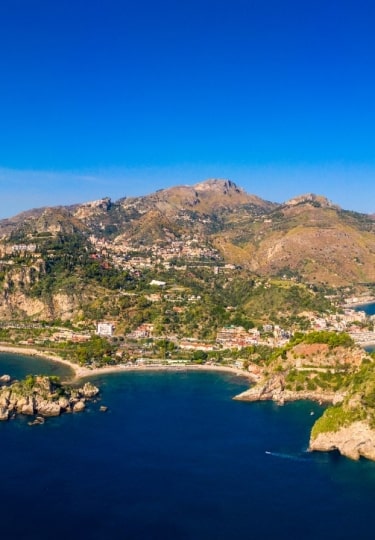The best time to visit Sicily is spring or fall when the weather is generally warm and sunny with little rainfall. The summer months, July and August, are the busiest, when a lot of Italians take their annual vacation and head to the beach.
Sicily’s climate is typically Mediterranean, with mild, wet winters and long, hot, dry summers.
Sicily is, in fact, a year-round destination, given its cultural riches. Late fall and winter are still wonderful times to explore the island’s cuisine and archaeological sites if you’re not deterred by cooler, wetter weather.
Visiting Sicily by Season
Summer
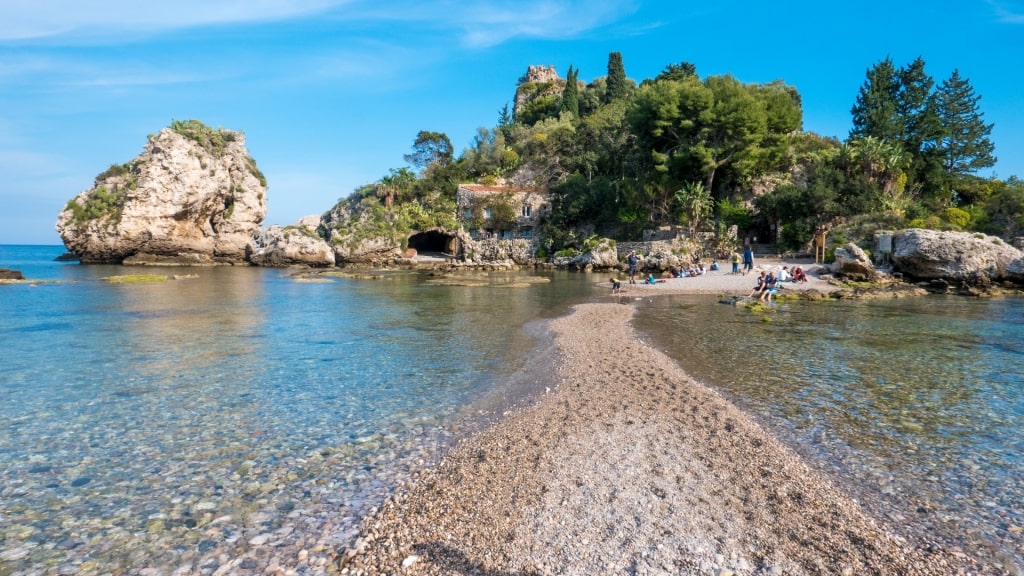
Isola Bella
Summers in Sicily are hot and dry; if you visit in July and August, you’re most likely to head to the beaches in the afternoons, keeping the cooler mornings for sightseeing.
Expect average daily highs of 75.9°F (24.4°C) in June, rising to 82.1°F (27.8°C) in August. Of course, you could always take a trip up Mount Etna, where it will be cooler at altitude.
During summer in Italy, do as the locals do and rest during the hottest hours of the day. Intersperse your sightseeing with frequent gelato stops to stay cool.
Fall
Fall is possibly the best time to go to Sicily, with balmy weather late into the season. Average daily highs are still around 68.8°F (20.5°C) by October.
The heat of the summer has lessened, the crowds thinned out, and the sea is still warm enough for swimming. This is also a good time of year for hiking—and late September is the time of the Vendemmia, or wine harvest.
November sees the beginning of winter and is the wettest month, with 3.3 inches (85mm) of rain. There’s even more on the northeast coast, which has its own microclimate thanks to its location between mountains and the narrow Straits of Messina. Temperatures have dropped but are still mild, with highs averaging 60.7°F (16°C).
Winter
Sicily is quiet in winter. This is the low season for tourism and, in Sicilian towns, many bars and restaurants close. Days are cool and often wet. In years of good snowfall, locals head to Mount Etna to ski.
Spring
Spring is possibly the best time to go to Sicily, with warm, sunny days, fewer crowds, and a proliferation of wildflowers. This is a wonderful time for hiking and cycling, as well as sightseeing. Expect average daily highs of 67.7°F (19.8°C) in Messina in May.
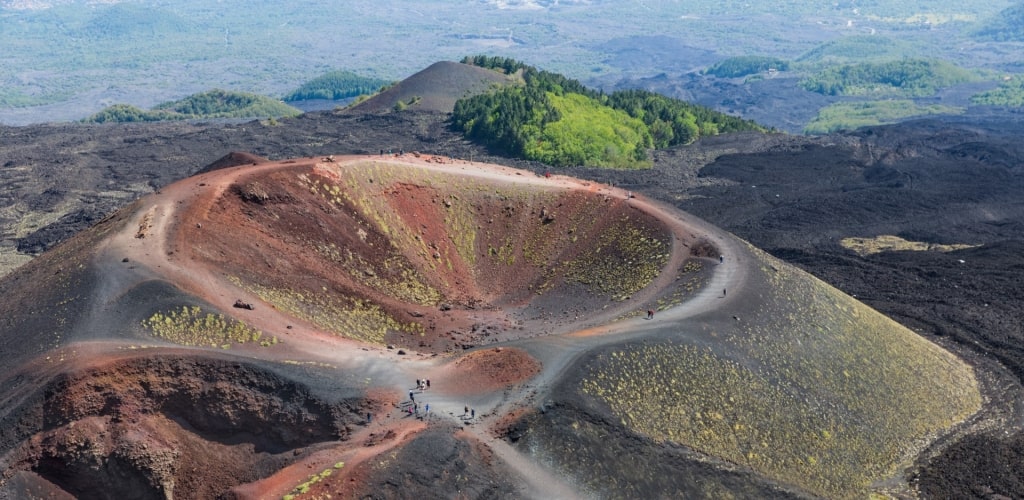
Silvestri Craters, Mount Etna
Easter is a busy time, with colorful celebrations and parades during Holy Week, providing a fascinating insight into the island’s culture.
When Is Rainy Season?
November to February are the rainiest months in Sicily, with rain falling as snow on higher ground.
November is the wettest month, which sees about 3.3 inches (85mm). This is a time to visit the island’s museums and indoor attractions.
When Is High Season?
High season in Sicily is July and August. Many Italians like to vacation domestically and flock to the island’s beaches and summer resort towns. August is especially busy. On the positive side, every town will be buzzing with life, with restaurants open until late at night.
Taormina is especially busy as summer is when the magnificent Greco-Roman theater hosts concerts, operas, and ballet against a dramatic backdrop of Etna.
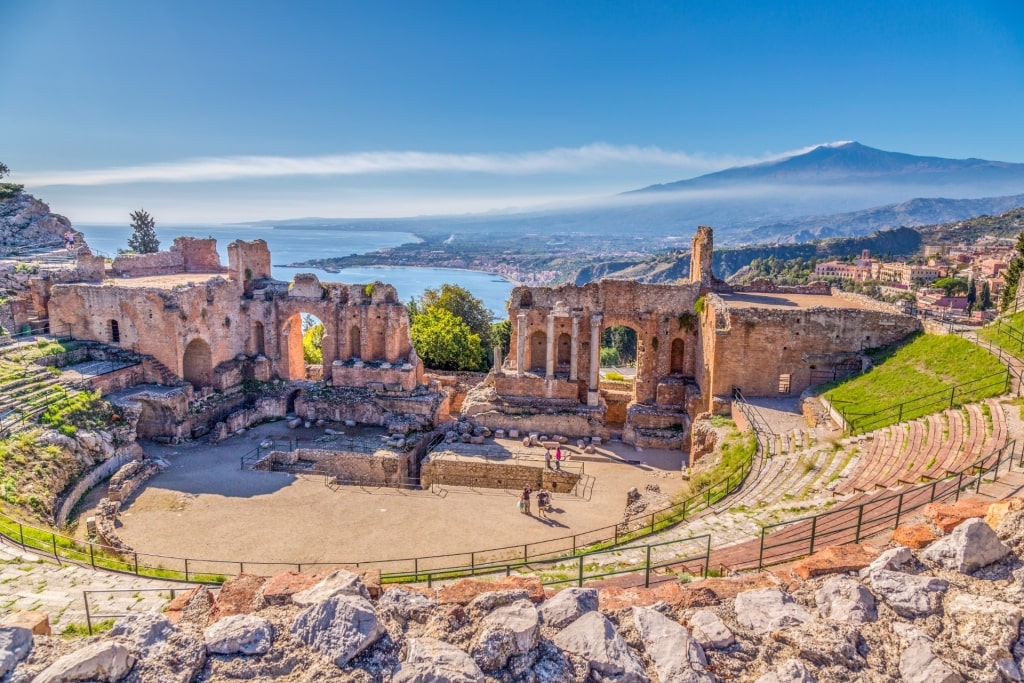
Greek Theatre of Taormina
When Is Shoulder Season?
Sicily’s shoulder season is the spring months of April and early May, and then September and October. Expect fewer crowds during these months and wonderful opportunities for hiking and cycling.
The sea will still be cool in April and May, but September and October are the perfect months for swimming when the water has warmed up. September is also regarded as the best month for scuba diving.
When Is Low Season?
Low season in Sicily is January and February, after a brief flurry of activity around Christmas. The weather is cool and often wet in winter, and many seasonal bars and restaurants close, although cities like Messina and Palermo are busy year-round.
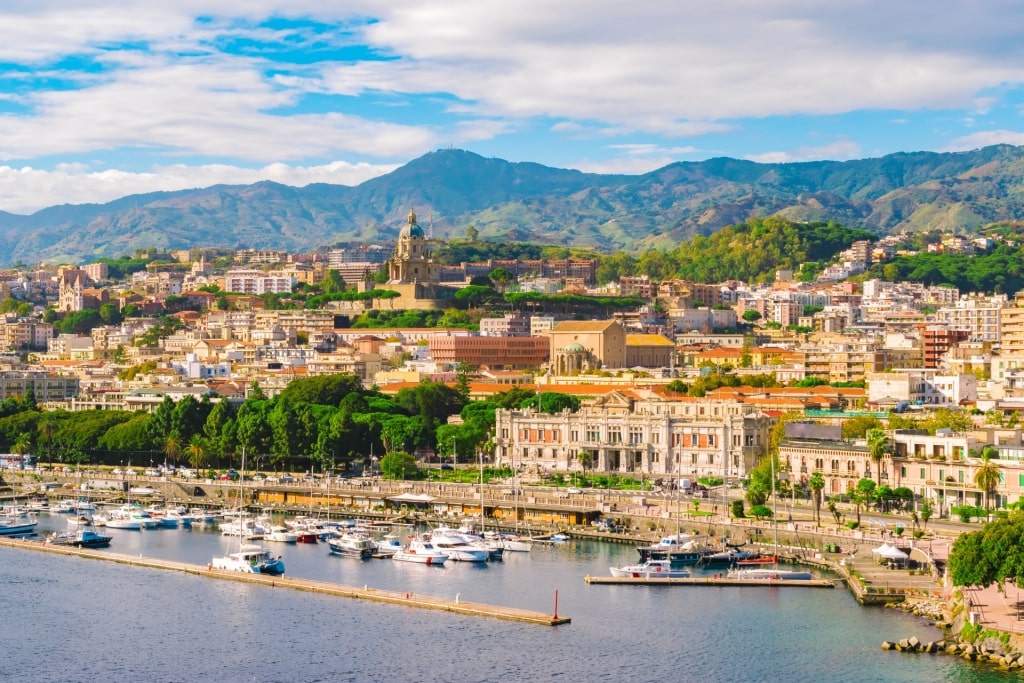
Messina
Are you intrigued by Sicily’s unique culture and dramatic landscapes? Browse Celebrity’s cruises to Sicily and plan your next vacation.
